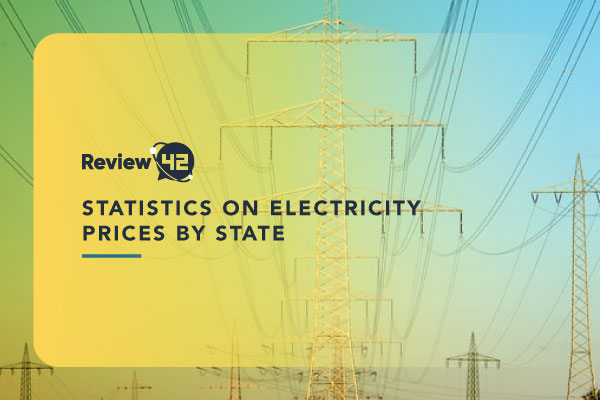Average Credit Card Debt in America (50+ Facts & Stats)
 Fact-checked
Fact-checked
Last Updated: February 2, 2023
Average Credit Card Debt Statistics
Average Consumer Credit Card Debt Statistics by Year
American Consumer Debt (Billion)
Average Credit Card Debt by Age
Utilization of Revolving Credit Card Statistics
Average Credit Card Debt by Gender
Average Credit Card Debt by Income
Average Credit Card Debt by Credit Score
Average Credit Card Debt by State
Top 10 States With the Highest Average American Credit Card Debt
Top 10 States With the Lowest Average American Credit Card Debt
Credit Card Delinquency Statistics
Credit Card Debt and Credit Score
Other American Credit Card Debt Statistics You Should Know
Impacts of COVID-19 Pandemic on Credit Card Debt
Wrap Up
With the onset of the COVID-19 crisis, the US economy suffered as it hadn’t since the Great Recession. With the frequent lockdowns, many Americans became unemployed, lost their stock assets, or closed down their businesses. Some of them dipped into their savings, but others started actively using their credit, which significantly increased the average credit card debt in America.
Average Credit Card Debt Statistics – Editor’s Choice
- The average household credit card debt in the US peaked at $7,027.
- A regular US family has accrued a $190,595 mortgage debt.
- Around 6 out of 10 Americans have a FICO score of at least 700.
- Credit card delinquency rates increased by 16% from the previous quarter.
- 45.4% of US families are burdened with some type of credit card debt.
- On average, women have 4.5 active credit cards while men have 3.6.
- There are 511.4 million credit cards in circulation in the US.
- The average credit card borrower in Alaska carries the highest credit card debt hitting $6,617.
Average Credit Card Debt Statistics
Numerous American households are burdened with credit card debt. That comes as no surprise as the cost for many necessities can’t be covered with one or more monthly salaries.
1. In August 2020, the average percentage rate on credit card accounts accruing interests amounted to 16.43%.
(NerdWallet)
2. According to credit card debt statistics, an average of $1,539 in annual credit card interest will fall upon self-employed American residents.
(NerdWallet)
3. Households with the lowest net worth have an average of $4,830 in credit card debt.
(ValuePenguin)
4. US households that carry credit card debt are liable to paying average interest charges of up to $1,155.
(NerdWallet)
5. Credit debt statistics show that 45.4% of US families are burdened with some type of credit card debt.
(ValuePenguin)
6. The average credit card balance is around $5,315, down from $6,194 since last year.
(CNBC)
Here’s a breakdown of the average household debt:
7. 70% of adults have accrued personal debt, of which 39% have a credit card debt, 25% a mortgage debt, 23% a car loan debt, and 16% a student loan debt.
(NerdWallet)
8. The average household credit card debt owed by an average US household amounts to $6,270, whereas the total consumer debt spikes to $14.56 trillion.
The total debt includes any kind of debt ranging from mortgages, credit lines, student loans, auto loans, fast loans, and other household debt.
(NerdWallet)
9. A regular US family has accrued a $190,595 mortgage debt, and the total mortgage debt is $9.86 trillion.
(NerdWallet)
10. Auto loans hit $27,852 per household, while the figures of the total auto loan US debt amount to $1.38 trillion.
(NerdWallet)
11. The student loan debt makes up for $56,572 in an average household, while the total country debt amounts to a staggering $1.55 trillion.
(NerdWallet)
Average Consumer Credit Card Debt Statistics by Year
12. In 2020, credit card debt showed signs of improvement, decreasing by 8.39%, but the total debt went up by 2.79%.
(Federal Reserve Bank of New York)
13. The year 2013 was most favorable for credit card debt holders since credit card debts totaled $672.
(Federal Reserve Bank of New York)
What is the average credit card debt of a consumer in America per year? Let’s see:
American Consumer Debt (Billion)
| Credit card debt | Total debt | Percentage of credit card debt to total debt | |
| 2003 | $693 | $7,555 | 9.2% |
| 2004 | $706 | $8,833 | 8.0% |
| 2005 | $732 | $9,792 | 7.5% |
| 2006 | $754 | $11,111 | 6.8% |
| 2007 | $817 | $12,133 | 6.7% |
| 2008 | $858 | $12,675 | 6.8% |
| 2009 | $812 | $12,279 | 6.6% |
| 2010 | $731 | $11,844 | 6.2% |
| 2011 | $693 | $11,661 | 5.9% |
| 2012 | $674 | $11,310 | 6.0% |
| 2013 | $672 | $11,280 | 6.0% |
| 2014 | $680 | $11,710 | 5.8% |
| 2015 | $714 | $12,065 | 5.9% |
| 2016 | $747 | $12,350 | 6.0% |
| 2017 | $808 | $12,955 | 6.2% |
| 2018 | $844 | $13,512 | 6.2% |
| 2019 | $881 | $13,952 | 6.3% |
| 2020 | $807 | $14,353 | 5.6% |
(Federal Reserve Bank of New York)
Average Credit Card Debt by Age
14. Americans aged 45 to 54 have a median credit card debt of $3,200, with 51.7% of those indebted, which is the highest proportion of the age groups.
(The Ascent)
15. Senior citizens aged 75 or older have the highest average credit card debt of $8,080, but only 28% are burdened with credit card debt.
(The Ascent)
16. Young people below 35 have both the lowest average credit card debt of $3,660 and the lowest median credit card debt of $1,900 compared to the other demographic groups.
(The Ascent)
| Median Credit Card Debt | Average Credit Card Debt | Percentage Who Carry debt | |
| Younger than 35 | $1,900 | $3,660 | 47.6% |
| 35-44 | $2,700 | $5,990 | 50.5% |
| 45-54 | $3,200 | $7,670 | 51.7% |
| 55-64 | $3,000 | $6,880 | 46.6% |
| 65-74 | $2,850 | $7,030 | 41.1% |
| 75 or older | $2,700 | $8,080 | 28.0% |
(The Ascent)
Utilization of Revolving Credit Card Statistics
17. As of May 2020, Gen X is the leader in the utilization of revolving credit cards with 31%.
(ValuePenguin)
18. Millennials and Gen Z are immediately behind Gen X with 30% of usage.
(ValuePenguin)
19. 22 out of 100 Baby Boomers use a revolving credit card, while the Silent Generation makes up for nearly less than 50%.
(ValuePenguin)
Average Credit Card Debt by Gender
20. Average credit card debt in America that burdens men makes up 38%, less than half of the percentage of women burdened with credit card debt.
(CardRates.com)
21. 97 million women and 95 million men own at least one credit card.
(CardRates.com)
22. On average, women have 4.5 active credit cards while men have 3.6.
(CardRates.com)
23. As much as 61% of women are very confident about having their credit card application approved. 56% of men feel the same way.
(CardRates.com)
24. Women aged 55 to 64 are twice as much indebted as men are (66% of women and 33% of men).
(CardRates.com)
25. 60% of women carry their outstanding balance from one month to another, which is 5% less than the men.
(Military)
26. Approximately two-thirds of both men and women only take care of the monthly mandatory minimum payment.
(Military)
Average Credit Card Debt by Income
27. Individuals who belong to the highest annual income percentage had an average of $12,600 in credit card debt. This is more than three times as much as households that have the lowest income.
(ValuePenguin)
The credit card debt increases alongside the levels of household income. To learn about the exact figures, check out the average American debt to income ratio numbers in the table below.
| Income percentile | Median annual income | Percentage of those who have credit card debt | Average credit card debt |
| Less than 20 | $16,290 | 30.5% | $3,830 |
| 20-39.9 | $35,630 | 45.6% | $4,650 |
| 40-59.9 | $59,050 | 55.0% | $4,910 |
| 60-79.9 | $95,700 | 56.8% | $6,990 |
| 80-89.9 | $151,700 | 45.9% | $9,780 |
| 90-100 | $290,160 | 32.2% | $12,600 |
(ValuePenguin)
Average Credit Card Debt by Credit Score
28. US consumers with an average credit score have the highest average credit card debt peaking at $9, 712.
(The Ascent)
The average credit card debt per person in America correlates with an individual’s credit score. Credit cardholders with an average credit score had the highest debt on their credit cards. The ones with the poorest score have the lowest debt, since they usually have limited credit card balances.
| Credit score range | Average credit card debt |
| 300–579 (Poor) | $3,446 |
| 580–669 (Fair) | $6,489 |
| 670–739 (Average/Good) | $9,712 |
| 740–799 (Great) | $6,051 |
| 800–850 (Exceptional) | $3,616 |
(The Ascent)
Average Credit Card Debt by State
29. The average credit card borrower in Alaska has the highest credit card debt hitting $6,617.
(Experian)
30. Delaware, Nevada, and New York have a median credit card debt of around $5,400.
(Experian)
31. Iowa and Wisconsin come last with the lowest credit card debt of $4,289 and $4,376, respectively.
(Experian)
Top 10 States With the Highest Average American Credit Card Debt
| State | Average Credit Card Debt |
| Alaska | $6,617 |
| Connecticut | $6,040 |
| Virginia | $5,992 |
| New Jersey | $5,978 |
| Maryland | $5,977 |
| Texas | $5,848 |
| Georgia | $5,693 |
| District of Columbia | $5,671 |
| Florida | $5,623 |
| Hawaii | $5,614 |
Top 10 States With the Lowest Average American Credit Card Debt
| State | Average Credit Card Debt |
| Iowa | $4,289 |
| Wisconsin | $4,376 |
| Kentucky | $4,521 |
| Idaho | $4,582 |
| Mississippi | $4,587 |
| South Dakota | $4,633 |
| Indiana | $4,651 |
| Vermont | $4,653 |
| Maine | $4,676 |
| Oregon | $4,681 |
(Experian)
Credit Card Delinquency Statistics
32. The percentage of consumer credit card accounts that were past due 30 or more days went down by 29% in 2020.
(Bankrate)
33. Credit card delinquency rates increased by 16% from the previous quarter, reaching 5.32%.
(CNBC)
34. Zoomers have a 76% higher delinquency rate than other demographic cohorts, adding up to the average US credit card debt.
(CNBC)
35. Baby Boomers have delinquency rates below 5%.
(CNBC)
36. The American youth (aged 18-29) has the highest delinquency rate at 9.36%.
(CNBC)
| Age of consumers | Delinquency rate |
| 18-29 | 9.36% |
| 30-39 | 6.05% |
| 40-49 | 5.64% |
| 50-59 | 4.79% |
| 60-69 | 4.34% |
| 70+ | 4.26% |
(CNBC)
Credit Card Debt and Credit Score
Credit card statistics show that credit card debt doesn’t always hurt the credit score. After all, debt isn’t the only parameter in determining the credit score. Payment history, length of time using credit, credit mix, the number of new credit accounts, and the used amount of money all contribute to your credit score.
Other American Credit Card Debt Statistics You Should Know
37. Outstanding credit card debt decreased by 9%, with over $73 billion in balances paid off in 2020 in spite of the recession.
(Experian)
38. More than 90% of Americans own a credit card.
(ValuePenguin)
39. Credit card interest charges stood at 20.09% in 2020.
(The Balance)
40. US households that have credit card debt are expected to pay around $1,250,000 in interest charges.
(The Balance)
41. The average amount of credit card debt in America went up in 2019, along with the credit score from 701 to 703.
(MarketWatch)
42. Self-employed US residents will have to pay $1,539 on average in credit card interest.
(NerdWallet)
43. 61% of Americans had at least one credit card in 2020, while the average consumer had four.
(The Ascent)
44. The average US FICO score is 703.4.
(Money Crashers)
45. According to college students‘ credit card debt statistics, one in four college students leaves college with more than $5,000 in credit card debt.
(The Balance)
46. 75% of them transfer their outstanding balance from month to month.
(Bankrate)
Impacts of COVID-19 Pandemic on Credit Card Debt
What is the average credit card debt in America during the pandemic?
The average debt for US consumers declined from $6,194 in 2019 to $5,315 in 2020.
The average balance went down in every state.
47. During the pandemic, just above half of the credit card indebted people (51 million) have added to their balances with 4 out of 5 of them blaming it on the pandemic.
(CNBC)
48. The average credit card annual percentage rate (APR) in the beginning of 2020 was 21.22% being only 1.02% lower than the current one.
(The Balance)
49. The highest credit card penalties are around 29.99%, which is only 1.41% lower than the average.
(The Balance)
50. Around a quarter of the cards (26%) are currently promoting a balance transfer at no charge for new cardholders.
(The Balance)
51. A slightly higher percentage of credit cards (29%) offered a 0% APR balance transfer deal last year.
(The Balance)
52. According to a recent survey, the average credit card debt in the United States has increased, urging 8 out of 10 people to shift their financial priorities.
(PRNewswire)
53. A fourth of the respondents are focused on paying off debts, less than a fifth (19%) are striving towards paying utility bills, and only 14% are building emergency funds.
(PRNewswire)
54. Paying out debts is a priority to men (29%) rather than women (22%).
(PRNewswire)
Wrap Up
In a nutshell, the average credit card debt in America in 2020 decreased compared to the previous year. According to Experian’s stats on credit card revolving debt, the average credit card debt stood at $5,315 at the beginning of 2021.
Despite all the challenges related to the COVID-19 pandemic, the relief measures enacted to fight the economic blow lead to a national increase of the average FICO score by seven points, the highest in a decade and a decrease in the credit utilization ratio.
FAQ
The average credit card debt of a US consumer is $5,897 spread over three cards. In the final quarter of 2019, the US credit card debt was at an all-time high of $930 billion. It is also worth mentioning that around 9.1% of the US credit card balances were 90+ days delinquent in 2020, so taking out credit card consolidation loans was possibly a good option for them.
The average person’s credit card debt varies from state to state. In particular, Alaskans carry the highest credit card balance of $6,617. Residents of Delaware, Nevada, and New York have a median credit card debt of around $5,400. Conversely, Iowa and Wisconsin have the lowest credit card balance of $4,289 and $4,376, respectively.
US adults have at least one credit card. Since last year, the average credit card debt in America is around $5,315, down from $6,194.
Sources
- NerdWallet
- ValuePenguin
- NerdWallet
- ValuePenguin
- CNBC
- NerdWallet
- Federal Reserve Bank of New York
- The Ascent
- ValuePenguin
- CardRates.com
- Military
- ValuePenguin
- The Ascent
- Experian
- ValuePenguin
- The Balance
- The Balance
- MarketWatch
- NerdWallet
- The Ascent
- Money Crashers
- The Balance
- Bankrate
- CNBC
- The Balance
- PRNewswire
- Experian
![How Many Marriages End in Divorce [Fascinating Facts and Stats]](https://review42.com/wp-content/uploads/2022/07/How-many-marriages-end-in-divorce.png)
![How Much Do Flight Attendants Make? [Latest Data for 2024]](https://review42.com/wp-content/uploads/2022/06/feature-image-56-how-much-do-flight-attendants-make.jpg)
![What Is a Bridge Loan? [Ultimate Guide for 2024]](https://review42.com/wp-content/uploads/2022/06/feature-image-55-what-is-a-bridge-loan.jpg)
![How Many Websites Are There? [2024’s Data]](https://review42.com/wp-content/uploads/2022/05/feature-image-55-how-many-websites-are-there.jpg)
![Do You Have to Pay Taxes on Inheritance? [Full Guide]](https://review42.com/wp-content/uploads/2022/04/feature-image-53-do-you-have-to-pay-inheritance-taxes.jpg)

![Average Gas Prices by State in the US [2024 Data]](https://review42.com/wp-content/uploads/2022/03/feature-image-51-average-gas-price-by-state.jpg)

![How Long Does It Take To Buy a Car? [All Steps Explained]](https://review42.com/wp-content/uploads/2022/03/feature-image-50-how-long-does-it-take-to-buy-a-car.jpg)
